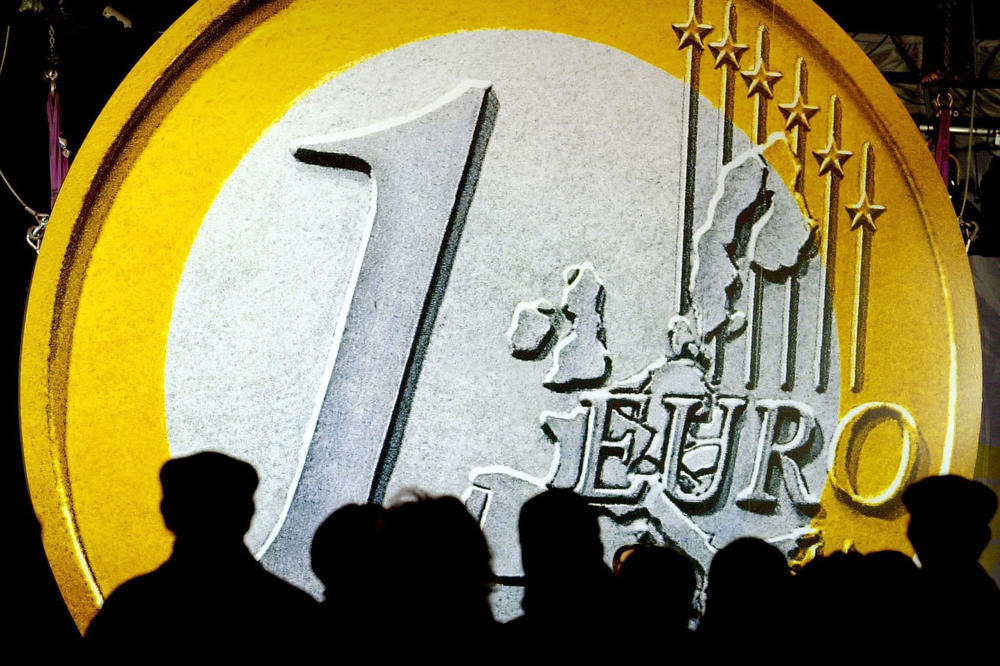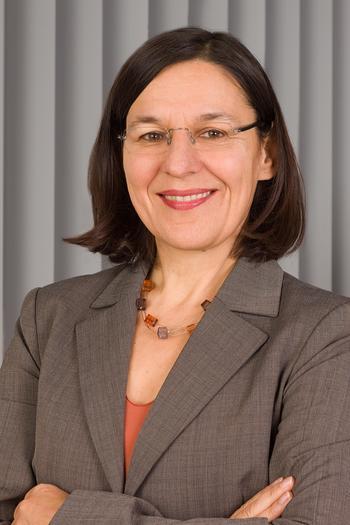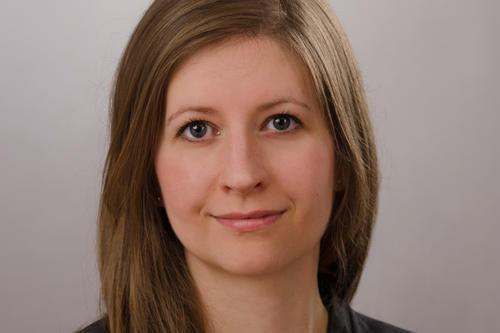The Euro Is Turning Twenty
The euro first became legal tender in twelve European Union member states almost twenty years ago
Nov 19, 2021
A giant euro coin towers over a crowd in Frankfurt city center on the morning of December 17, 2001. This was where the first coin bags with a selection of the new euro coins were sold.
Image Credit: picture alliance
On January 1, 2002, the euro, which had been introduced three years previously as an accounting currency, became the day-to-day operating currency for most citizens of the European Union (EU). The euro replaced the national currencies of several countries, including the Irish pound and the Deutsche Mark. (D-Mark). When the common currency was introduced, the national currencies of the participating countries were locked at fixed rates. The exchange rate for the D-Mark was 1.95583. Nineteen member states have since adopted the euro and 340 million people now use this as their currency. The time pressure and logistics involved in introducing the new currency were immense, as banknotes worth 2.5 billion euros and coins worth 15.5 billion euros were transported throughout Germany in roughly 2,600 purpose-built vehicles for banks and companies within the country to be able to withdraw and deposit euros from the state central banks starting September 1, 2001. The old D-Mark banknotes and coins retained their value regardless of the euro’s introduction; in fact, you can still go to the Deutsche Bundesbank and exchange them for euros without having to pay a fee. To commemorate this milestone, we’ve put together eight different perspectives from prominent academics reflecting on twenty years of the euro.
Professor Theocharis Grigoriadis: New Possibilities for Eastern Europe
Theocharis Grigoriadis is a professor of economics at the Institute for East European Studies, Freie Universität Berlin.
Image Credit: personal collection
The introduction of the euro opened up new possibilities for the national economies of central and eastern Europe and the former Soviet Union. While Slovakia, Slovenia, and the Baltic states have since joined the eurozone, other eastern European economies within the European Union – such as Poland, Hungary, Czechia, Croatia, Romania, and Bulgaria – have more or less aligned their respective monetary policies with that of the European Central Bank. The presence of strong spillover effects resulting from the unconventional monetary policy of the European Central Bank during the financial crisis indicates a strong interdependence between the eurozone and non-euro countries of the European Union.
Furthermore, in contrast to other post-Soviet economies and countries in eastern and southeastern Europe such as Serbia and Ukraine, Russia – in terms of the exchange rate system between the Russian ruble and the euro – seems to depend significantly on developments in monetary policies within the eurozone. For that reason, and despite the tense political situation between the EU and Russia with regard to Ukraine and Georgia, the euro remains a strategic currency for Russia, playing a crucial role in the further internationalization of the Russian economy.
Professor Paul Nolte: A Driver of Social and Cultural Europeanization
Paul Nolte is a professor of modern and contemporary history at the Friedrich Meinecke Institute, Freie Universität Berlin.
Image Credit: Bernd Wannenmacher
Recently, while packing for a trip, I came across a travel guide that still had the prices in lira for Italy – that’s how old it was! Not having to exchange currencies and convert prices has rapidly become par for the course for people throughout large swathes of Europe, including Germans, who had attached a particular significance to the D-Mark as a symbol of the wealth generated by the “German economic miracle” in the West and of the yearning for a consumer culture and other freedoms in East Germany. While the tabloids tried to smear the euro as the “Teuro” (or the “pricey euro”) for a time, the right-wing AfD party also played the populist card against the single European currency in its early years.
Critiques of the euro from within member states are not to be brushed aside, but economics aren’t everything. From a historical perspective, one thing is clear: The euro has not only proven itself a powerful driver of cultural Europeanization, but also contributed to the leveling out of social differences between northern Europe and less economically developed countries in southern Europe – which, in turn, has given rise to some criticism within Germany.
Dr. Wolfgang Strehl: Is the Euro a Worthy Competitor of the Dollar?
Wolfgang Strehl is an economist and lecturer at the John F. Kennedy Institute for North American Studies, Freie Universität Berlin.
Image Credit: personal collection
In the two decades since it was first introduced, the euro hasn’t managed to topple the US dollar as the dominant currency within the world’s financial system. The dollar continues to be the undisputed number one reserve currency and international means of payment. The eurozone crisis and its political mismanagement tangibly weakened the euro’s position internationally. The eurozone also does not yet have a “deep” capital market with an ultra-secure and abundantly supplied benchmark security like the US’s Treasury bond. However, further progress in the European banking and capital markets union and the permanent issuance of Eurobonds – which need the full liquidity backstop of the European Central Bank – could considerably increase the international appeal of the euro in the coming decades.
A true European alternative to the dollar would – alongside offering immediate economic benefits for Europe – also reduce the European Union’s dependency on the US financial system, and thus contribute to the stability of the world economy.
Professor Barbara Fritz: Concerned Looks from Buenos Aires
Barbara Fritz is a professor of Latin American economics at Freie Universität Berlin.
Image Credit: Vitoscha Königs
The euro had just been introduced, and Latin America was watching the experiment with a great sense of curiosity. As an economist from Europe, I was asked by my Argentinian colleagues to give a lecture. Their first question surprised me: What mechanisms were there to leave the eurozone? All I could say was, “Well, actually none.” After all, that had been the original idea: to permanently consolidate European integration. The Argentinian economists looked worried.
Twenty years later, after the Greek debt crisis and its ramifications, we’re much wiser – or to put it another way, just as smart as those economists in Buenos Aires were back then. Argentina had linked its currency to the US dollar at a 1:1 exchange rate – and proceeded to slide into a catastrophic economic depression. Of course, this was a totally different kind of monetary union, but the lesson remains the same: when economic disparities split member countries into creditors and debtors, this is poison for a common currency. The solution for the eurozone would be to prevent excessive imbalances. Joint borrowing is a good start – but it would take much more.
Professor Thomas Rixen: Has the Euro Driven Integration Forward – or Has It Sown Discord?
Thomas Rixen is a professor of international and comparative political economy at Freie Universität Berlin.
Image Credit: personal collection
From the very beginning, two overarching theses were propagated about the euro. Many economists predicted that it would serve as a “sower of discord,” as member states were too economically heterogeneous for the euro. A common currency without a common fiscal policy would fuel social disparities and divide the European Union. Others believed that the euro would drive integration forward, binding the states together economically and consolidating the political union. The latter was the theory politicians decided to follow.
Twenty years later, however, the theory of divergence has rung true. The eurozone crisis divided the EU into north and south, creditor and debtor countries, ignited nationalism, and brought the euro to the brink of failure. The recovery measures were left to the technocrats of the European Central Bank.
It seems that it has taken the coronavirus pandemic to shake the politicians awake. The recovery fund and shared debt could be the springboard for a solidarity-based fiscal policy and EU taxes. The idea of “no taxation without representation” indicates that this path will require a democratization of the EU. If politicians want to keep up appearances and take the right approach, then we will need strong political momentum and political figures who will embody courage and encourage confidence – so where are they?
Professor Tanja A. Börzel: A Symbol of a Peaceful, United Europe
Tanja A. Börzel is a professor at the Otto-Suhr Institute for Political Science, Center for European Integration, and director of the SCRIPTS Cluster of Excellence.
Image Credit: Martin Funck
On January 1, 2002, I stood in line for the ATMs at midnight, excited and waiting to withdraw one of the first ever euro banknotes. The exchange rates had already been fixed two years prior. Its introduction as legal tender was thus mostly symbolic in nature. The political symbolism of the euro, however, is just as important as its economic significance because the common currency serves as the keystone to economic integration. The Maastricht Treaty of 1993 anticipated the development of the European Union into a bona fide economic union by way of a monetary union. The extent to which the euro has contributed to the economic integration of Europe is controversial. Just nineteen of the now twenty-seven members of the European Union since Brexit belong to the eurozone. They have yet to develop a common economic policy that would be essential in establishing a stable euro in the face of growing challenges.
The feasibility of a single currency without a common economic policy has been the subject of heated debates within academia and politics from the very beginning. Its introduction in Germany was a political decision, with the euro representing the peaceful unification of Europe. This explains why the German government was a strong advocate of stabilizing the eurozone as well as providing financial assistance to mitigate the consequences of the Covid-19 pandemic.
Professor Steffen Heinrich: Both a Pioneer and a Laggard – The Euro from a Japanese Perspective
Steffen Heinrich is a professor of Japanese politics and political economy at the Institute of East Asian Studies/Japanese Studies.
Image Credit: Bernd Wannenmacher
In an editorial in The Asahi Shimbun, one of the major liberal daily newspapers in Japan, the introduction of the euro on New Year’s Day in 1999 was depicted as the materialization of a vision. The article noted that the idea of the nation was about to change, as sooner or later, the euro would make the citizens of individual member states into citizens of Europe.
The Japanese perspective on the euro is now much more sober-minded and defined by the realization that European monetary policy now seems to follow Japan’s lead. The Bank of Japan began its policy of cutting interest rates from 1990 onward and dedicated itself to an “unconventional monetary policy” far earlier than the European Central Bank. Economists are divided as to whether the extended period of low interest rates is a reflection of demographic aging, which is much more pronounced in Japan. If this is indeed the case, the eurozone will trail behind Japan for a long while yet. While the establishment of the euro in 1999 and its introduction as legal tender in 2002 may have been considered groundbreaking at the time, for the foreseeable future it is more likely that Japan is playing the role of pioneer.
Dr. Wiebke Rabe: The Euro as the Path to a Multipolar International Financial System – China’s Perspective
Wiebke Rabe is a senior researcher in political science at the Institute of Chinese Studies, Freie Universität Berlin.
Image Credit: personal collection
The introduction of the euro was welcomed in China. The establishment of the eurozone was considered an example of regional integration and a step toward a more balanced global financial system to counter the hegemony of the US dollar. The disintegration of the eurozone in the course of the financial crisis seemed as improbable to Chinese financial experts as it was undesired. China thus continued to invest in European government bonds.
Although the euro has facilitated trade with China, Chinese leadership sees the weaknesses of European integration reflected in the common currency. In that sense, steps toward solving the eurozone crisis were seen as sluggish, while insufficient liquidity, a fragmentation of the European debt market, and an incomplete monetary union were considered further weaknesses. The euro was considered a role model for the internationalization of its own currency, the renminbi. In the coming years, digitalization will be important for both currencies – a development that has advanced rapidly in China thanks to the digital currency e-CNY.
This text originally appeared in German on October 2, 2021, in the Tagesspiegel newspaper supplement published by Freie Universität Berlin.









